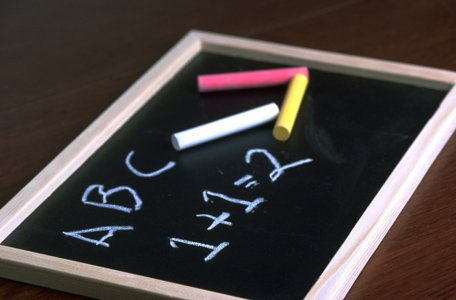This week the Special Education series offers an overview of Occupational Therapy and how these services may improve your child’s life in and outside the classroom.
During the Individual Education Plan (IEP) process, occupational therapy may be recommended as part of a students’ special education program. The term, “occupational therapy” is sometimes misunderstood by parents new to the IEP process. It is easier to see the value of occupation related treatment for children when you consider that school is the primary workplace of childhood and learning is a child’s “job.”
For example, a youngster who has difficulty learning to read cannot successfully do their work as a student or child with poor eye-hand coordination may be unable or unwilling to participate in school sporting activities.
Often parents ask me to explain the difference between occupational therapy and physical therapy. The American Occupational Therapy Association (AOTA) says “both physical and occupational therapy help improve a child’s quality of life, but the difference is physical therapy deals with pain, strength, joint range of motion, endurance and gross motor functioning, whereas occupational therapy deals more with fine motor skills, visual-perceptual skills, cognitive skills, and sensory-processing deficits.”
If an occupational therapy evaluation is offered during the process of developing your child’s IEP, it would be wise to give the recommendation serious consideration. How well you prepare for the assessment will help the therapist develop a treatment plan that best suits your child’s needs. Prior to the evaluation you should receive a parent’s questionnaire. Carefully answer all questions about your child’s health, social development and the family’s medical history.
“Make certain to list any concerns about his motor skills motor skills, activities of daily living dressing, grooming, feeding), behavior and play skills. If possible arrange childcare for your other children so that you can take part in your child’s evaluation. Your child should wear comfortable clothing that allows for ease of movement. Sometimes, clothes may need to be removed, so that body parts may be examined. Remember to bring the completed case history with you to the evaluation,” says AOTA.
What should you expect during the evaluation? The AOTA advises the evaluation’s purpose is to gather information about your child’s sensory processing skills, and access ways your child’s system takes in and processes information. The evaluation includes a careful observation of the following sensory systems:
*Visual— how your child processes what he sees
*Auditory—- how your child processes what he hears
*Tactile— how your child processes what he touches
*Vestibular— how your child processes himself in motion
*Proprioceptive— how your child processes his actual movement
*Motor planning— the way your child can plan and make movements
*Self regulation— the way your child calms himself
*Visual-motor and visual-perceptual skills including handwriting, cutting with scissors, upper extremity use, strength and range of motion, and use of both hands together (bilateral skills)
*Motor control— how well your child moves, including coordination and the strength activities of daily living such as dressing, grooming and feeding self and increasing the ability to eat a variety of foods.
Once the assessment is complete, the AOTA says, “the occupational therapist will develop an individualized plan, recommend specific treatment activities, identify measurable goals and establish timelines for reaching the objectives.
The therapist may help students work on fine motor skills so they can grasp and release toys and develop good handwriting skills, address hand-eye coordination to improve kids’ play and school skills, including hitting a target, batting a ball, copying from a blackboard, etc.
“For students with severe developmental delays the therapist will help the child learn basic tasks such as bathing, getting dressed, brushing their teeth and feeding themselves. Children with behavioral disorders will be taught ways to maintain positive behaviors in all environments, instead of hitting others or acting out, using positive ways to deal with anger, such as writing about feelings or participating in a physical activity.
The occupational therapist “teaches kids with physical disabilities the coordination skills needed to feed themselves, use a computer, increase the speed and legibility of their handwriting, evaluate a child’s need for specialized equipment, such as wheelchairs, splints, bathing equipment, dressing devices, or identify which communication aids will assist children who have sensory and attentional issues to improve focus and social skills.”
Jayne Matthews Hopson writes about education Matters because “only the educated are free.”
